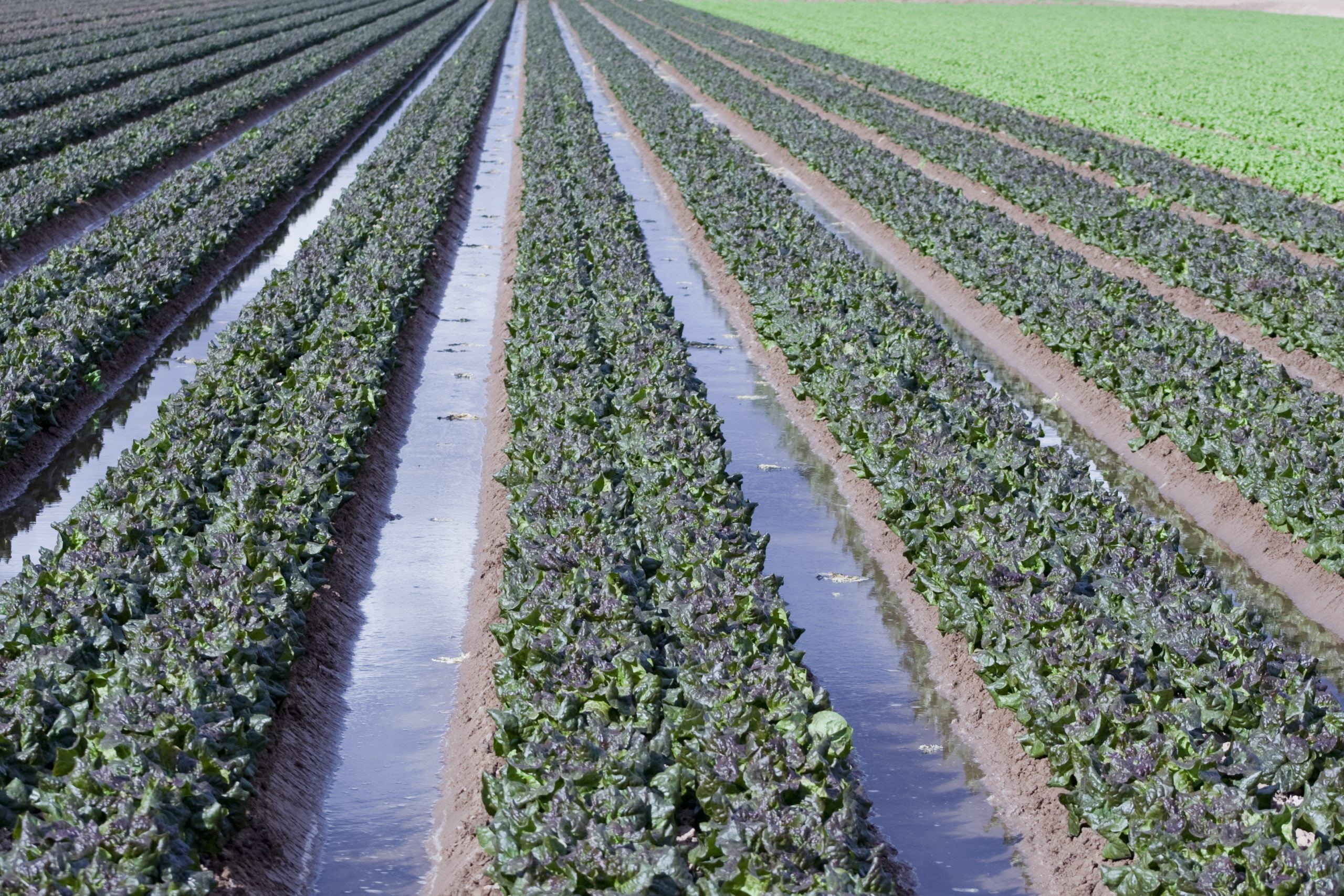As a result of this analysis, M&A obtained regulatory approval to use low-flow sampling methods for long-term monitoring, reducing sampling costs by 75 percent.
M&A recently had the opportunity to challenge a long-established practice that hydrologists have applied when collecting groundwater samples. This practice, which has been largely driven by environmental regulators, involves “purging” three to five casing volumes of water from a well. The idea is to ensure that the sampling captures formation water rather than water that has been resident within the well. Some researchers[1] have questioned the efficacy of this approach — particularly in heterogeneous aquifers with spatially varying concentrations of chemical constituents. However, its simplicity is compelling.
Unfortunately, the “purge” method has many practical drawbacks[2]. For one thing, in many settings, purge water must be disposed of, which can be costly. In addition, purging can require a significant amount of time, another factor that increases cost. Yet another limitation is the impact of purging on heads due to the large volume of water that must be removed; this unintended consequence can complicate efforts to understand flow directions and rates in a groundwater system. These limitations have led to the development of alternative sampling approaches such as the “low-flow,” minimal-drawdown purge method[3]; the HydraSleeveTM method (GeoInsight), the Snap Sampler (ProHydro, Inc.); and passive-diffusion bag samplers, among others. Each of these methods samples from different zones of the aquifer.
Comparing the purge, low-flow, and HydraSleeve methods
To assess the potential for cost savings associated with long-term monitoring, M&A compared three sampling methods — purge, low-flow, and HydraSleeve — at a closed mine site in the western U.S. Samples were collected from 35 wells completed in sedimentary strata ranging from fractured sandstone to mudstone, where the reported hydraulic conductivities ranged from less than 0.001 to over 400 ft/day and saturated thicknesses ranged from 4 to 170 feet. Not all wells penetrated the aquifer fully. The samples were analyzed for common constituents (TDS, chloride, sulfate, bicarbonate as HCO3, calcium, magnesium, potassium, sodium, carbonate as CO3), and trace metals (uranium, molybdenum, selenium, and arsenic).
Interestingly enough, the data generally showed good agreement between sampling methods across analytes and wells. Although the results differed between the methods for individual samples, no method produced results with a consistent high or low bias. Relative deviations were found to be heteroscedastic: they were significantly larger among lower-concentration samples than among higher-concentration samples. Additionally, trace metals had larger relative deviations than common constituent and routine parameters. We also found that hydraulic conductivity, saturated screen length, and total well volume did not significantly control comparability between sampling methods, contrary to some regulatory guidelines[4].
Statistical analysis
We conducted a series of sign tests to evaluate the hypothesis that results for the following paired samples would be equal for each analyte (Table 1):
- Standard purge and low-flow (SP-LF)
- Standard purge and HydraSleeve (SP-HS)
- Low-flow and HydraSleeve (LF-HS)
Table 1: Sign test p-values
| Ca | Mg | Na | K | Cl | HCO3 | SO4 | TDS | As | Mo | Se | U | |
|---|---|---|---|---|---|---|---|---|---|---|---|---|
| SP-HS | 0.241 | 0.680 | 0.241 | 1.000 | 0.157 | 0.109 | 0.017 | 0.032 | 0.003 | 0.572 | 0.108 | 0.446 |
| SP-LF | 0.896 | 0.889 | 0.674 | 0.405 | 0.785 | 0.691 | 0.310 | 0.701 | 0.001 | 1.000 | 0.143 | 0.354 |
| LF-HS | 0.782 | 0.355 | 0.009 | 0.383 | 0.063 | 0.039 | 0.310 | 0.022 | 0.016 | 0.845 | 0.185 | 0.121 |
Values of less than 0.05 indicated that the sample pairs were not comparable at the 95% confidence level. The analysis found that the methods were comparable for 28 of 36 sign tests. Seven of the eight tests that showed differences involved the HydraSleeve method, indicating that HydraSleeve samples are less comparable to those collected using the low-flow and purge methods.
Only the arsenic samples showed significant differences between results for the purge and low-flow methods. Although the differences were significant for arsenic between all three sampling method pairs, purge consistently generated higher concentrations than low-flow or HydraSleeve. This may reflect the hydrogeologic conditions at the site; during the drilling of some wells, pyrite was noted in the lithology. When pyrite oxidizes — as it may during purging — it is known to release arsenic into groundwater[5]. In this case, purge sampling could yield erroneously high arsenic concentrations.
Lessons learned
- Sampling costs can differ substantially depending on the method used; significant factors include purge time, the volume of waste water generated, and both the initial and recurring costs for equipment.
- Each sampling methods draws water from the aquifer (or parts of the aquifer) differently, potentially disturbing groundwater in different ways.
- The comparability of sampling methods is not necessarily predictable; site-specific analysis may be needed to determine the comparability between methods.
- Comparative studies can demonstrate that less expensive and/or lower-impact sampling methods are acceptable.
About the Authors
Tim Bayley, Ph.D., joined M&A in 2008 and now leads our dynamic simulation modeling team. He specializes in applied statistics, numerical modeling, and probabilistic modeling for decision support, risk analysis, and optimization. Tim has developed numerous probabilistic models in both dynamic simulation and numerical (flow-and-transport) environments. He focuses mostly on the mining, energy, and environmental sectors.
Colin Kikuchi, Ph.D., joined M&A in 2014, bringing a background in quantitative hydrology and resource economics. He specializes in groundwater flow modeling, uncertainty prediction for hydrologic simulations, analysis of groundwater / surface water interactions, and design of hydrologic monitoring networks.
References
Dowling, C.B., Poreda, R.J., Basu, A.R., Peters, S.L., and Pradeep, K.A., 2002, Geochemical study of arsenic release mechanisms in the Bengal Basin groundwater, Water Resources Research 38:9
Kearl, P.M., Korte, N.E., Stites, M., and Baker, J., 1994, Field comparison of micropurging vs. traditional ground water sampling, Groundwater Monitoring & Remediation 14:4
Puls, R.W., and Barcelona, M.J., 1996, Low-flow (minimal drawdown) ground-water sampling procedures, EPA/540/S-95/504, Ground Water Issue, U.S. Environmental Protection Agency, Office of Solid Waste and Emergency Response, Washington, D.C.
Savoie, J.G., and LeBlanc, D.R., 2012, Comparison of no-purge and pumped sampling methods for monitoring concentrations of ordnance-related compounds in groundwater, Camp Edwards, Massachusetts Military Reservation, Cape Cod, Massachusetts, 2009–2010, U.S. Geological Survey Scientific Investigations Report 2012–5084
Shanklin, D.E., Sidle, W.C., and Ferguson, M.E., 1995, Micro-purge low-flow sampling of uranium-contaminated ground water at the Fernald Environmental Management Project, Groundwater Monitoring & Remediation 15:3
Yeskis, D., and Zavala, B., 2002, Ground-water sampling guidelines for superfund and RCRA project managers, EPA 542-S-02-001, Ground Water Forum Issue Paper, U.S. Environmental Protection Agency, Office of Solid Waste and Emergency Response, Washington, D.C.
[1] Eg., Kearl et al., 1994; Shanklin et al., 1995
[2] Kearl et al., 1994
[3] Puls and Barcelona, 1996
[4] Eg., Yeskis and Zevala, 2002
[5] Dowling et al., 2002










